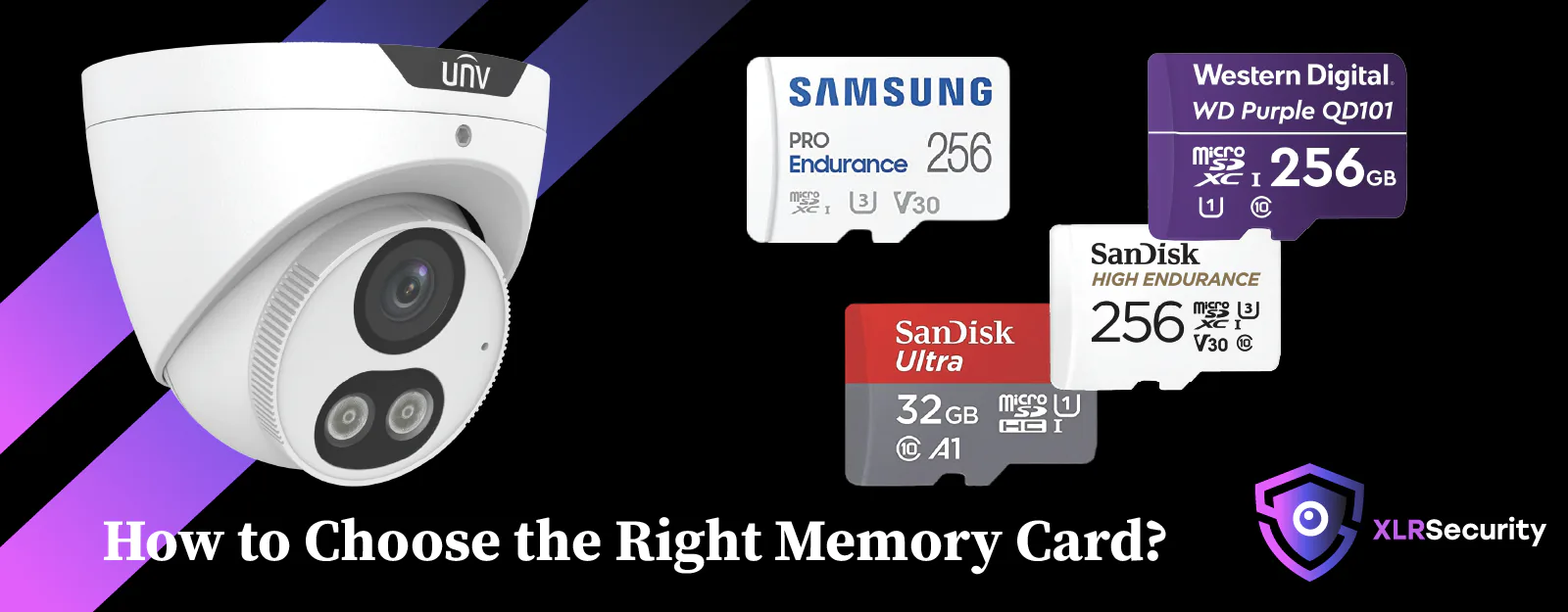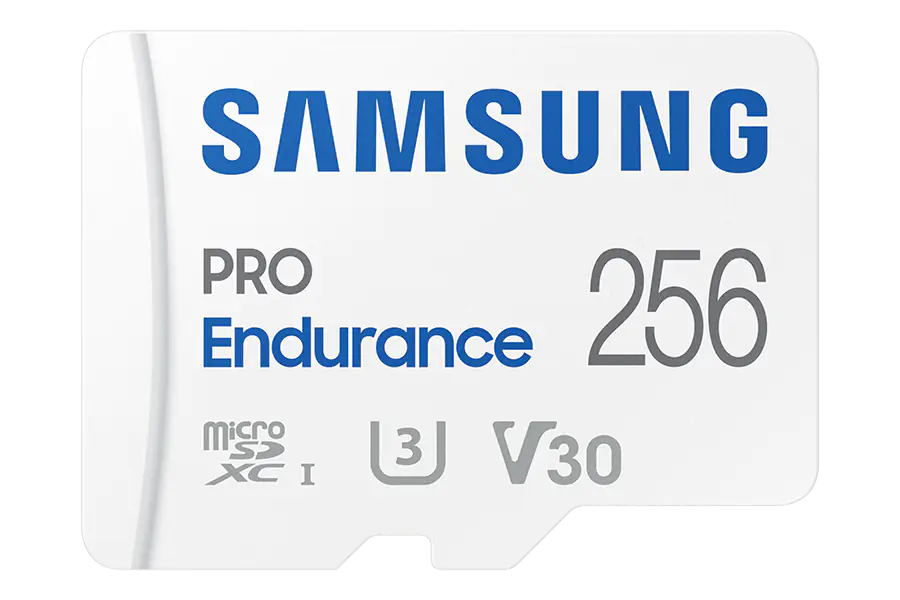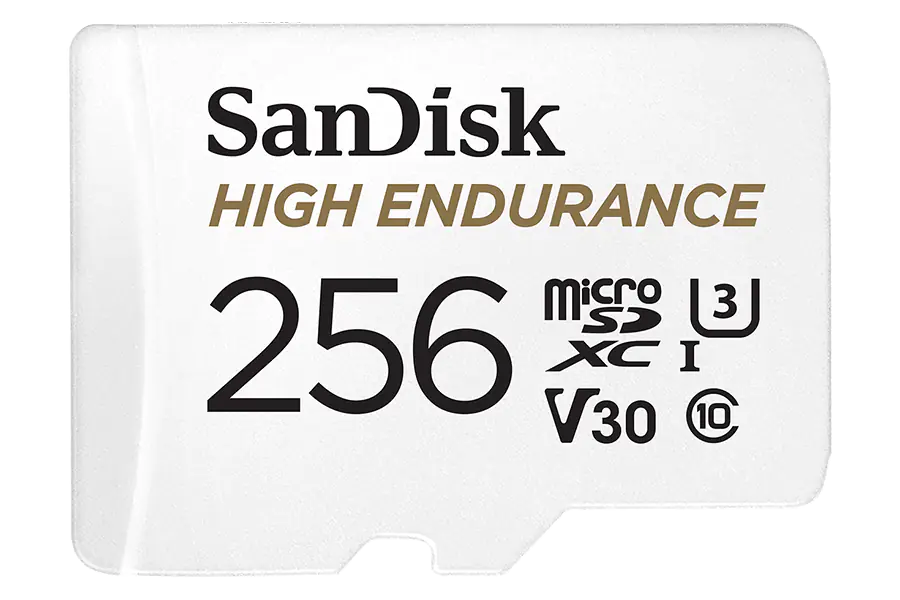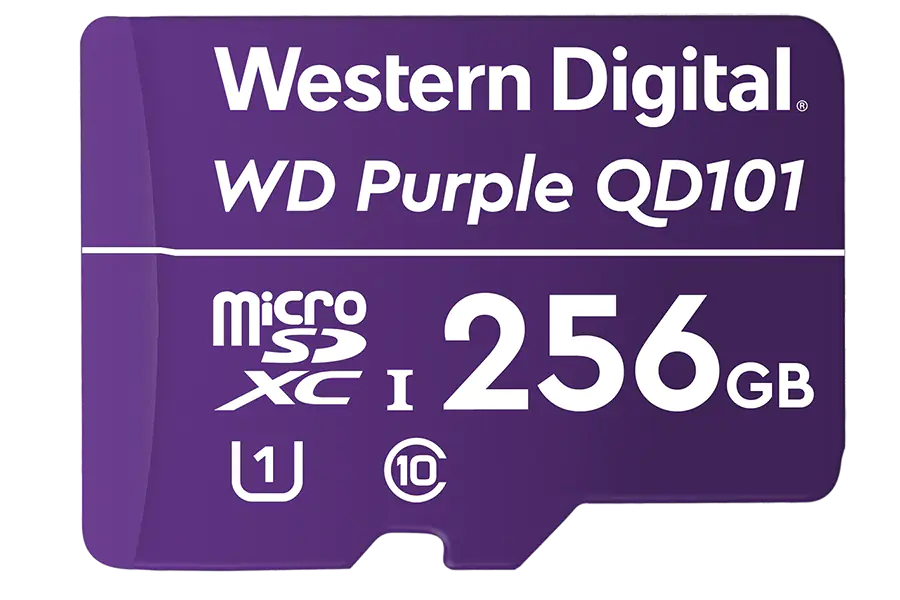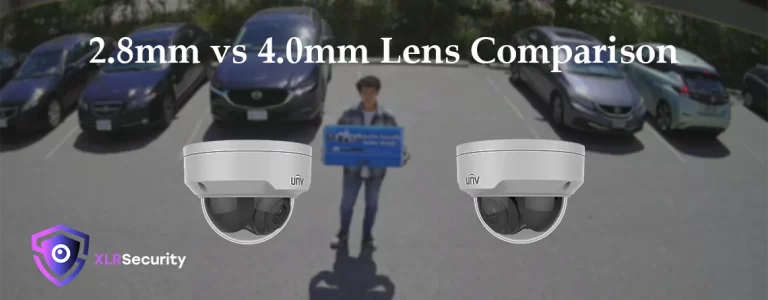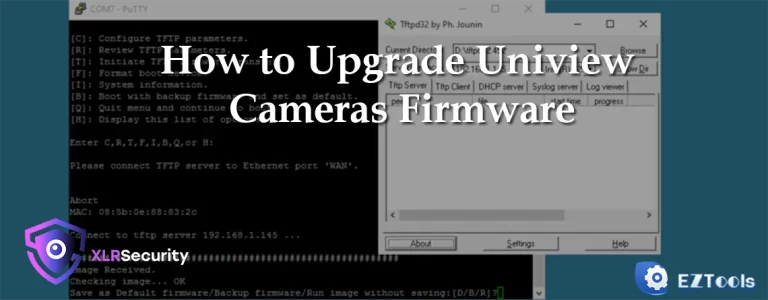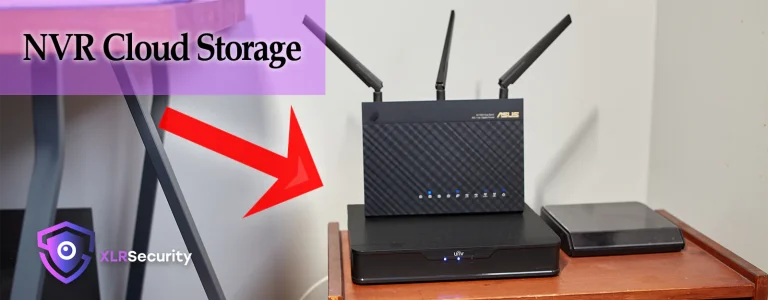Choosing the wrong microSD card for your security camera could lead to issues within 1-2 years. Most memory cards are not meant to be continuously overwritten, and will quickly run into issues when used inside a security camera.
Therefore, it’s important to understand the difference types of memory cards, and choose the one that meets your requirements and budget.
Speed – How much do I need?
Class 10? UHS 3? V1? What do those symbols on the SD card mean?
These symbols are designated by the SD Association (SDA) and define the minimum write speed for the memory card.[1] If you purchase a card with a C10 (class 10) rating, this guarantees at least 10MB/s sequential write speed.
For security cameras, we recommend a minimum of Class 10 / UHS 1 / V10 rating. You don’t need anything faster (as of 2023), because all security footage is heavily compressed to ~3-8 Mbps which is honestly not very demanding in terms of speed.
Capacity – How much storage do I need?
A 4MP security camera recording at 15fps will produce ~64GB of footage in one day!* This is a serious problem, as you only have a couple hours to retreive the footage before it’s overwritten.
There are two solutions to this problem:
- Set the camera to record on motion detection only
- Purchase a larger MicroSD card
Therefore, we typically suggest 128GB ~ 512GB microSD cards for video surveillance.
Some cameras have limited support for large capacity memory cards; for example this Uniview 4MP camera has a limited capacity of 256GB for the internal memory card. Always be sure to check with the manufacturer before purchasing an SD card with a large capacity.
*Our calculation of 64GB per day assumes 2560*1440 resolution, 15fps, and H.264 video compression with a constant bitrate of 6144 Kbps.
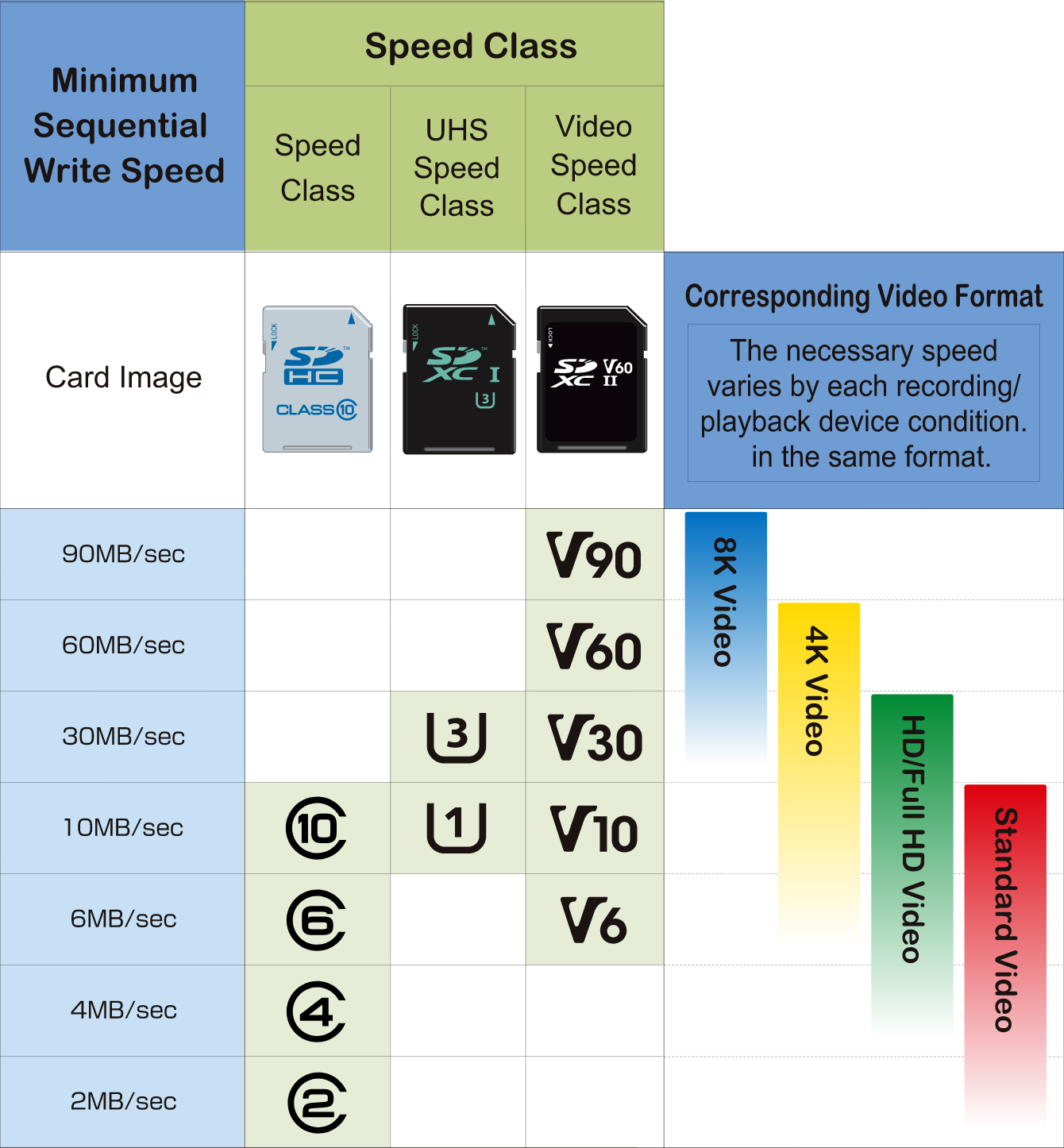
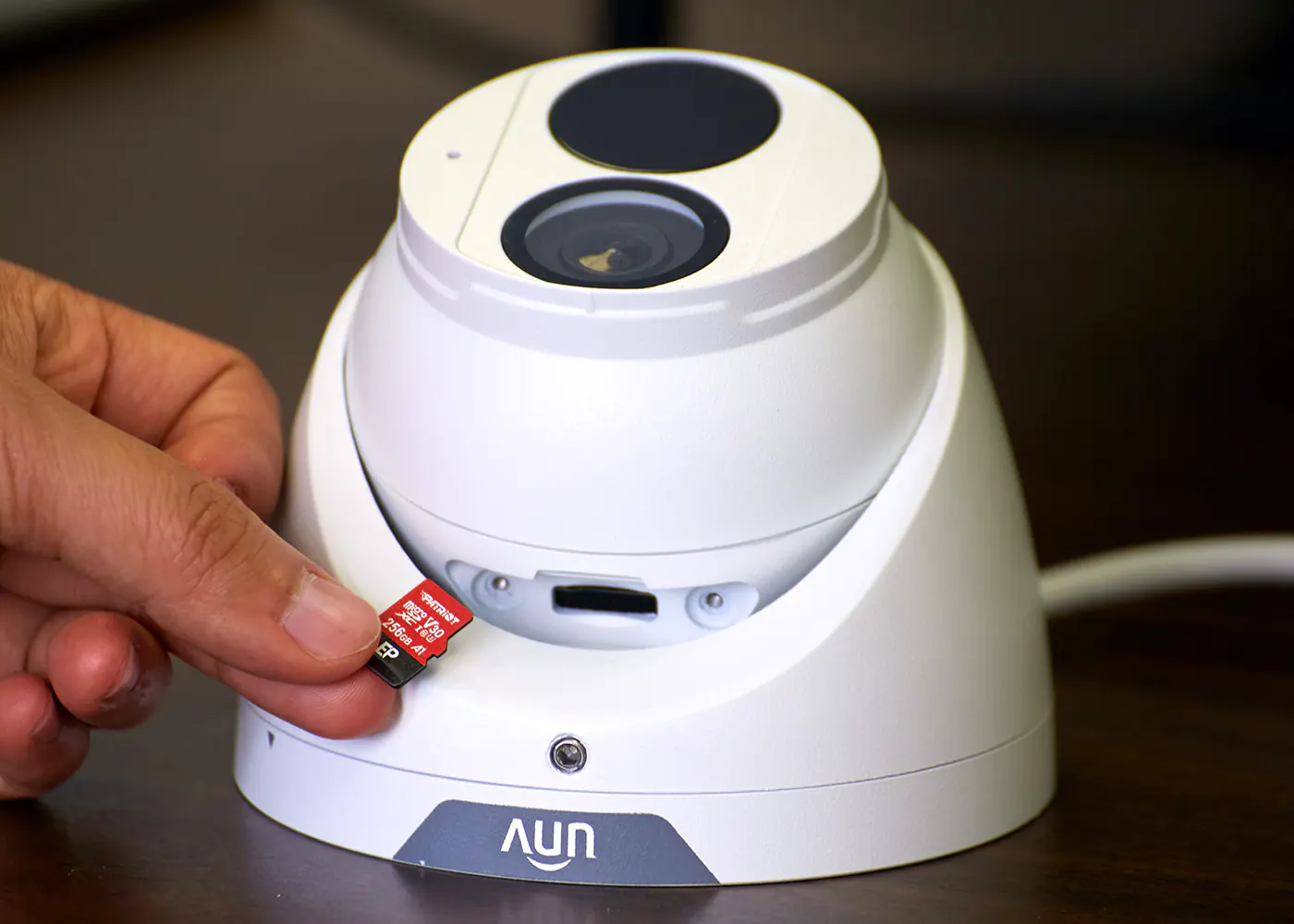
Longevity – How many write cycles do I need?
Consumer grade memory cards typically last for ~12-18 months before they have issues with video retrieval. Once the memory degrades beyond a certain point, the video files become corrupted which leads to issues with playback.
We suggest purchasing a high-endurance microSD card; they are designed specifically for security camera usage.
Here’s a list compiled by reddit user u/alaudine of high endurance mircoSD cards, along with their TBW (terabytes written) ratings:
Reliability of microSD Endurance Cards Compared (w/ TBW)
A card with a high TBW will be able to keep writing for longer; the 4MP security camera in our previous example will use up 120 TBW after ~5.5 years! In fact, Samsung recently released a MicroSD card that lasts for 16 years continuously recording.
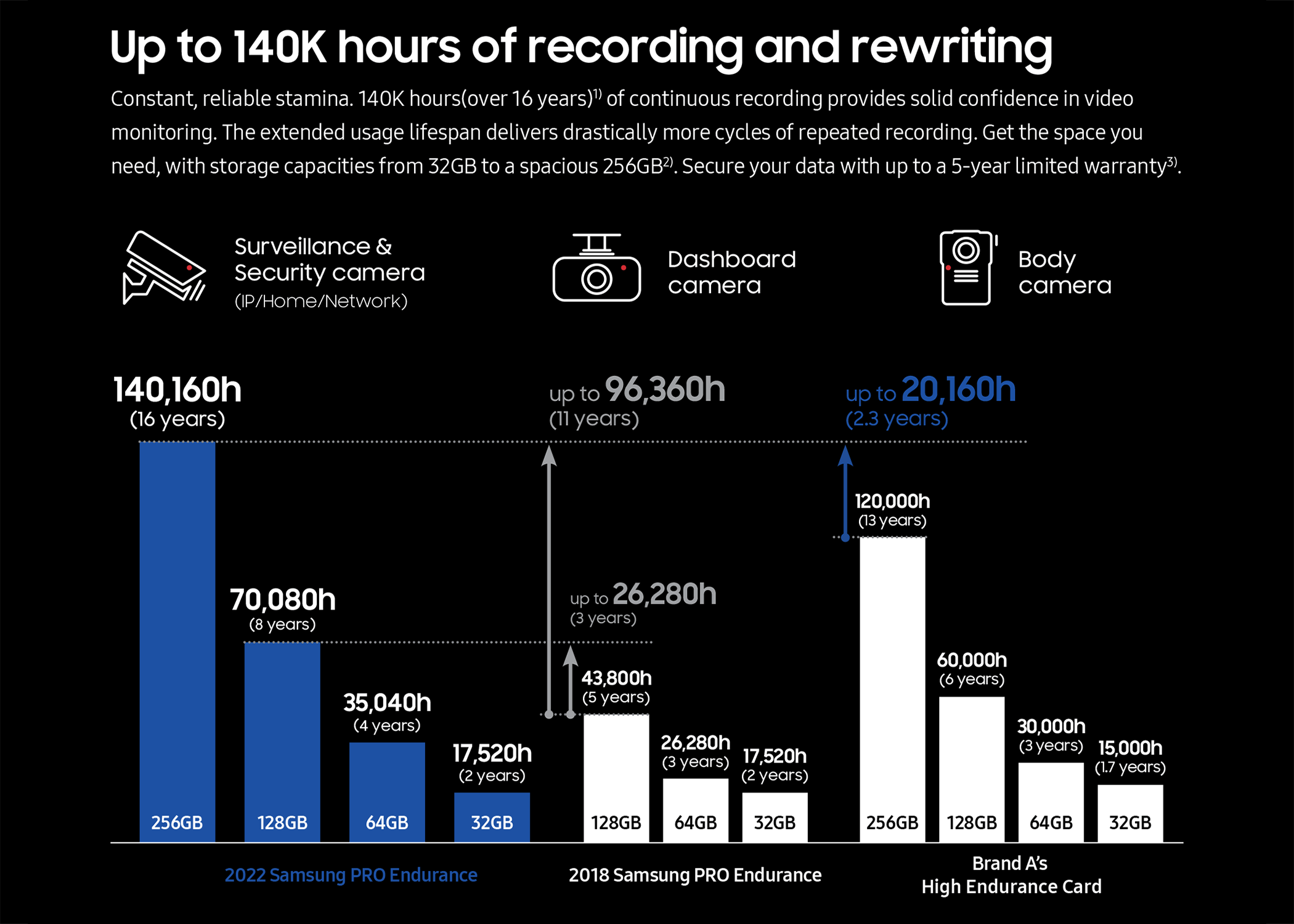
Final Thoughts
Be sure to purchase a microSD card that has sufficient capacity, with high endurance. Purchasing a regular (non-endurance) memory card could lead to premature failure of the device.
Speed is not as important, since most security cameras on the market will use much less than 10MB/s of bandwidth. Stick with Class 10 / UHS 1 / V10 rating cards, and you’ll be fine.

